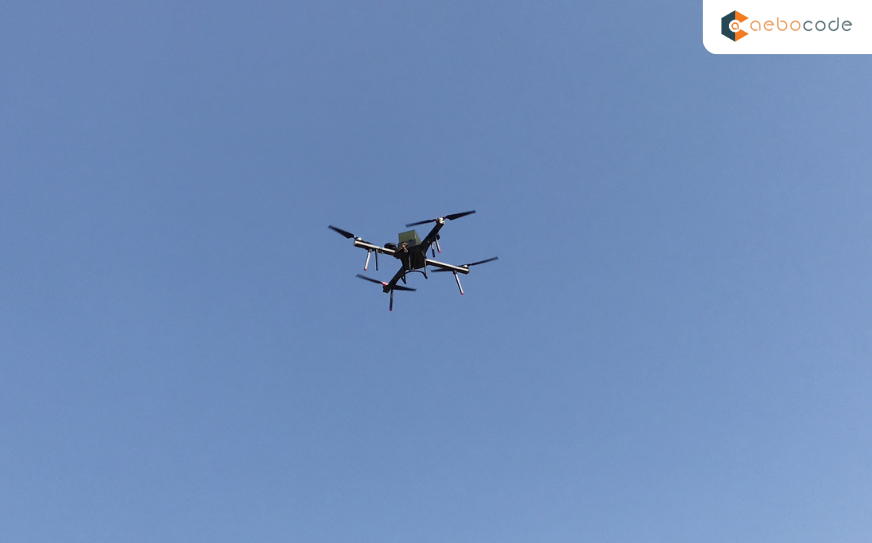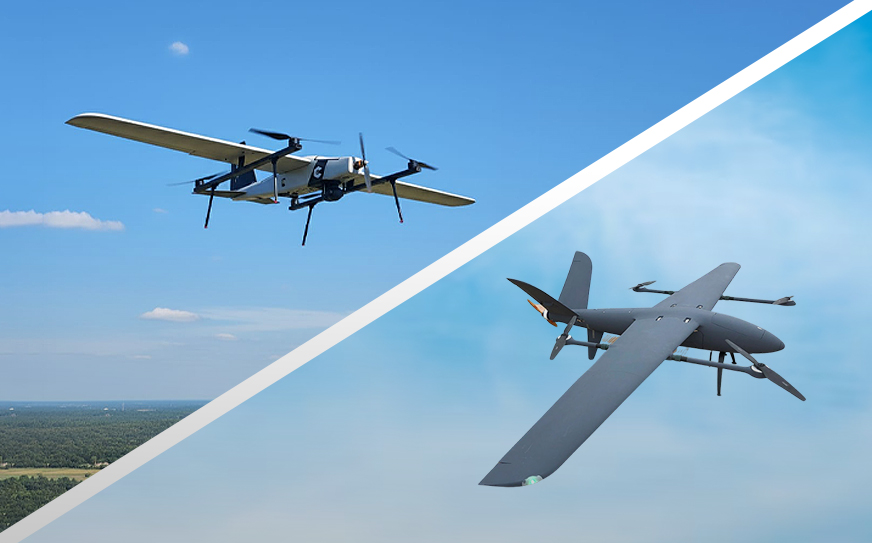
What Are FPV Kamikaze Drones and How Do They Work in War?
May 12, 2025
Top Drone Applications in India in 2025: Advancing Technology in Surveillance, Delivery, and Mapping
May 23, 2025Loitering Munitions vs. Drones: Differentiating Differences and How They Impact Warfare
With changing dynamics of war in modern times, technological leaps are continuously remodeling war tactics. Two such technological leaps are loitering munitions and drones (UAVs – Unmanned Aerial Vehicles). Although both are unmanned aerial vehicles used for airborne missions, designers created them for different purposes and with different objectives in mind. For India, which is quickly modernizing its defense system, there is a necessity to understand the difference between such systems and their impact on national security. This blog looks at the manner in which loitering munitions are different from traditional drones and why both are necessary but in a different way in contemporary military thought.
Also read: VTOL Drone
What Are Loitering Munitions?
Suicide drones or kamikaze drones or loitering munitions are a missile-drone hybrid. Operators preprogram them to loiter in the air for extended periods near a battlefield or target area, waiting for the opportunity to strike. After they detect a high-value target, the loitering munition descends and detonates, dispensing a lethal payload.
Loitering munitions are exemplified by the Israeli Harop, the US Switchblade, and the recently established Indian systems such as the ALS-50. Engineers design them to attack with high precision while minimizing collateral damage.
What Are Drones (UAVs)?
Drones, or Unmanned Aerial Vehicles (UAVs), are crewless flying machines with no personnel on board. For various missions—such as reconnaissance, surveillance, intelligence collection, target detection, and even armed attacks—militaries use them extensively. UAVs are reusable and typically equipped with state-of-the-art sensors and communications gear.
Indian defense units employ an array of UAVs, from Israeli Heron drones to native Rustom and Tapas-BH drones, at large volumes across the country’s borders for intelligence and surveillance.
Also read : Kamikaze Drones
Key Differences Between Loitering Munitions and Drones
While both loitering munitions and drones are part of the unmanned aerial systems, they differ significantly in their structure, function, and application. Engineers design loitering munitions for one-time use, equipping them with explosive payloads so they self-destruct upon striking a target. Operators control them either semi-autonomously or directly, using them primarily for rapid, high-precision strikes. On the other hand, drones are reusable and serve multiple purposes beyond attack, such as surveillance, reconnaissance, and intelligence gathering. Operators can fully remote-control drones or program them to operate autonomously, often equipping them with cameras, sensors, or weapon systems. While loitering munitions are generally cheaper per mission due to their disposability, drones offer cost-effectiveness in the long run due to their reusability. These key differences highlight how each system supports different tactical needs on the battlefield.
Tactical Considerations
Operators use loitering munitions best in situations where dynamic targeting is critical. For example, in border skirmishes or anti-terror operations in difficult terrain like Kashmir or the Northeast, loitering munitions can provide spot-fire instantly without the hassle of artillery or crewed aircraft. They can loiter for hours, indeed days, over enemy positions, and provide commanders with the choice to strike when the time is suitable.
UAVs, or drones, are however worth their weight in gold during ISR operations. They are sky eyes and overwatch large areas for hours at a time before needing to put down. Drone strikes can even offer precision-guided bombs and munitions, which can even return to home base before landing.
Strategic Relevance for India
China’s ongoing standoff in Ladakh, Pakistan’s cross-border raids, and terrorism in certain regions all present India with complex security challenges on multiple fronts. Here:
Loitering Munitions may prove to be a good deterrent by offering immediate reaction capability to destroy high-value targets without jeopardizing soldiers’ lives. DRDO in India is developing loitering munitions that ground troops or units can launch directly.
Drones enable prolonged observation and surveillance, with the Indian Armed Forces under constant watch. India’s planned procurement of UAVs like the MQ-9B Predator drones from the US will significantly improve its border and maritime security.
Also read : Defense Drone Manufacturers in India
Technological Innovations in India
Aebocode Technologies and defence-tech entrepreneurs advance India’s indigenization by developing top loitering weapon systems and UAVs. With “Make in India” and DRDO support, Indian indigenous capabilities closely approach global defense technology standards, falling behind only slightly.
India’s quest for self-reliance in defense production involves innovation of systems most suited to its unique geographical and operational conditions. To steal thunder, loitering munitions suit Himalayan high altitudes, while drones excel in close-encounter forest patrols in Northeast.
Conclusion
Loitering munitions and drones are not interchangeable technologies. India needs both technologies to address its complex security threats, as each offers unique advantages that enhance modern military strategy. By investing in both, the nation not only boosts its tactical readiness but also strengthens its geopolitical position.
While Aebocode Technologies continues to assist defense modernization in India by way of innovation, the future of war is evident: it will lie in these smart, unmanned aerial vehicles. Drones and loitering munitions are reshaping how wars are fought and won in the 21st century by balancing cost, efficiency, and precision.






